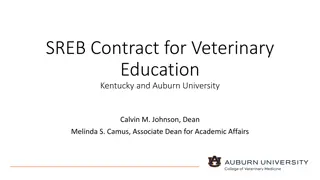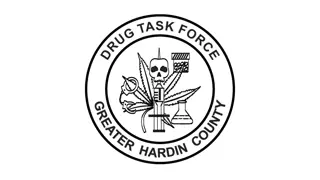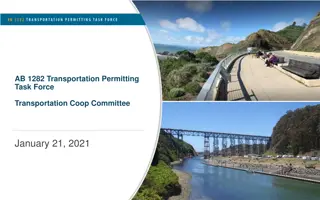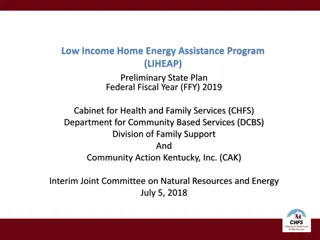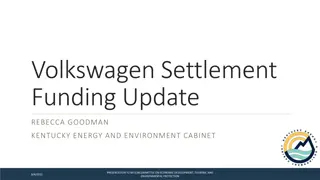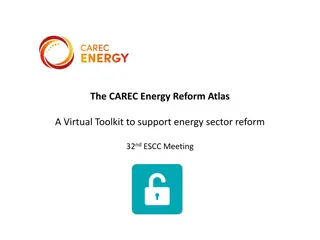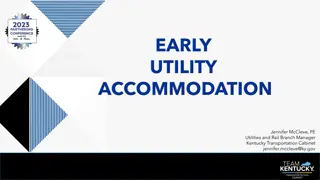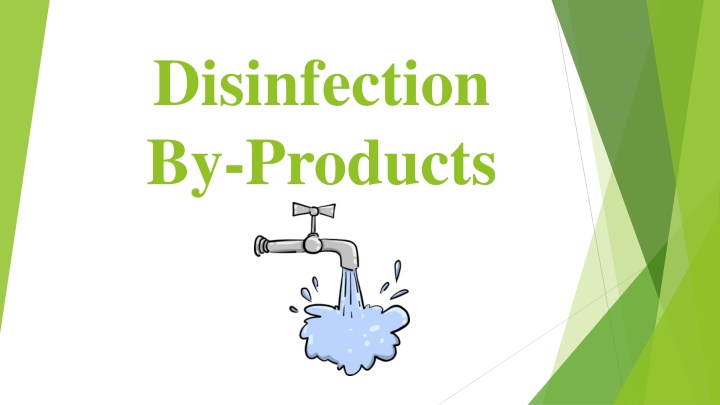
Kentucky UI Reform Task Force Updates
The Kentucky UI Reform Task Force provides strategic updates on virtual appointments, claimant website improvements, fraud prevention measures, and more. Efforts are focused on enhancing the UI system experience and efficiency for claimants. Initiatives include automated communication, real-time chat tools, and identity verification processes to combat fraudulent claims.
Download Presentation

Please find below an Image/Link to download the presentation.
The content on the website is provided AS IS for your information and personal use only. It may not be sold, licensed, or shared on other websites without obtaining consent from the author. If you encounter any issues during the download, it is possible that the publisher has removed the file from their server.
You are allowed to download the files provided on this website for personal or commercial use, subject to the condition that they are used lawfully. All files are the property of their respective owners.
The content on the website is provided AS IS for your information and personal use only. It may not be sold, licensed, or shared on other websites without obtaining consent from the author.
E N D
Presentation Transcript
Disinfection By-Products
Overview Precursors DBP Factors Methods of Disinfection Data Collection Treatment
Precursors Precursors + Disinfectant = DBPs Precursors Total Organic Carbons (TOC) or Natural Organic Matter (NOM) Bromide DBPs Total Trihalomethanes (TTHMs) Haloacetic Acids (HAA5s) Chlorite Bromate
DBP Factors Factor Components NOM Bromide Effect Precursor Concentration Increased precursor concentrations in the raw water lead to higher DBP formation Disinfection Chlorine Chloramine Chlorine Dioxide Ozone Time Increased disinfectant dosage levels lead to higher DBP formation Water Age DBP concentrations increase with time Water Chemistry pH Higher pH = more THMs Lower pH = more HAA5s Hotter temperatures = more DBP formation DBP potential is higher at a low alkalinity Increases TTHM concentrations where biofilm is the most prominent Causes biodegradation of HAA5s Temperature Alkalinity Bioactivity Biofilm
Methods of Disinfection Heat Boil order 5 minutes Ultraviolet (UV) Radiation Low detention time No residual Lower doses of chlorine required
Disinfectants Bromine Iodine Ozone Potassium Permanganate Solid stick form for swimming pools Medicinal purposes Emergency Not permanent populations Strong oxidant Combats taste, odor & color Helps improve coagulation Controls taste and odor Reduces TTHMs Advantages Odor Corrosive Unstable High Cost Adverse long term health effects Cannot be stored, on-site generation Energy intensive Corrosive Unknown by- products Disadvantages
Disinfectant s Oxygen Chlorine Dioxide Chlorine Advantages Simple feed Nontoxic No by-products Strong oxidant No TTHM formation Controls taste and odor Strong oxidant Persistent residual Long history of use Disadvantages Corrosion Scaling Weak oxidant Adverse health effects from chlorate and chlorite by- products On-site generation (unstable in high concentrations) DBPs!!! pH influences effectiveness Possible taste and odor problems
DBP Rules Disinfectants & Disinfection By-Products Rule (DBPR) Stage 1 DBPR 1998 rule set MCLs for TTHMs & HAA5s Stage 2 DBPR 2006 rule set Locational Running Annual Average (LRAA) TTHMs HAA5s MCL = 0.080 mg/L (80 ppb) Bromoform Chloroform Dibromochloroform Dichlorobromoform MCL = 0.060 mg/L (60 ppb) Monochloracetic acid Dichloroacetic acid Trichloroacetic acid Monobromoacetic acid Dibromoacetic acid
Data Collection & Testing DBP profiling Highest areas of DBP formation in system? Storage tank? Flushing? Water age profiling Disinfection residual profiling POE Farthest distant point Before and after storage tank TOC testing Calculate removal ratio between raw and finished water Source water testing Jar tests
LOOP DEAD ENDS!
Treatment Optimize coagulation Perform jar testing Lower pH Alkalinity (mg/L as CaCO3) Target pH Affects water corrosivity and changing it may cause damage to pipes 0-60 5.5 Could increase HAA5s Replenish Granulated Activated Carbon (GAC) atop filter units 60-120 6.3 120-240 7 Adsorbs organic compounds (Lowers TOC) >240 7.5 Can remove volatile compounds like TTHMs Make sure to follow proper filter management protocols
Storage Tank Management Proper water turnover in storage tanks Adequately sealed and protected Perform routine inspections Disinfect after any activity that might lead to contamination Separate inlet and outlet lines are required
Construction Recirculation Most effective for chloroform Volatizes TTHMs Aeration Adds ambient air to tank Mixing Keeps the disinfectant evenly distributed Reduces water age Eliminates dead volume
Compliance Locational Running Annual Average (LRAA) must be below MCL Based off last 4 quarters of samples Even if last sample is below the MCL, compliance isn t achieved until LRAA is below MCL May continue to receive DBP related NOVs that require public notices be provided to the customers even after samples have shown improvement
Conclusion Precursors DBP Factors Methods of Disinfection Data Collection Treatment


